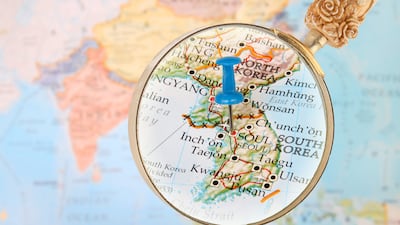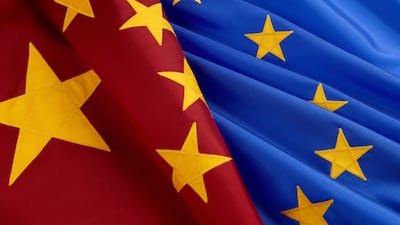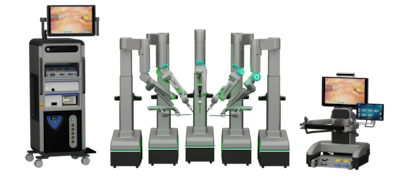When President Joe Biden slapped a series of new tariffs on Chinese imports, including steep increases on medical devices, it was a shot across China’s bow signaling a significant change in US trade policy.
“This is part of a larger regime shift in industrial policy the United States is currently navigating,” said Danny Schmidt, a senior health care analyst with global consulting firm RSM, who spoke to Medtech Insight about the tariffs.
Schmidt’s colleague at RSM, Amanda Laskey, whose focus at the firm is the life sciences industry, agreed, and said the shift points to a sharpening of focus by the White House — and the US government as a whole — on making sure the products that Americans rely on are safe and readily available.
“This larger trend is not just in medical devices, but also in biopharma with increased scrutiny of Chinese-developed devices and biopharma ingredients,” Laskey said, noting the BIOSECURE Act, legislation pending in Congress that would have major ramifications for US life sciences companies doing business in China. (Also see "BIOSECURE Act Update Offers Biotech Companies Eight Years to Divest Contracts With Firms Of ‘Concern’" - Pink Sheet, 11 May, 2024.)
Specific to medical devices and equipment, particularly personal protective equipment (PPE), which the tariffs target, Laskey said part of the strategy behind the Biden policy is to not only ensure Americans have safe products but that the free and steady flow of those products can be maintained when supply chains are stressed as they were during the COVID-19 pandemic.

She also pointed out that while the issues leading to the tariffs existed prior to the pandemic, the shortages of PPE and other strains on US supplies during the health crisis magnified those issues and accelerated the timing.
“The government has been putting in more initiative, more security for businesses, to ensure that in the case of another pandemic, the American population is prepared, and that we have a safe and reliable supply chain that can be easily deployed,” she said.
The tariffs, which Biden announced last month, seek to balance what the White House sees as unfair trade practices on part of the Chinese government and industry — of which there is little, if any, separation.
“Hospitals and care providers are already facing a tough operating environment, which means they are working to be cost-conscious on every component in the delivery care model. But at the same time, they are also evaluating patient outcomes and quality of care.” — Danny Schmidt
Overall, the tariffs target $18bn worth of Chinese goods, which along with medical products include electric vehicles, semiconductors, and essential minerals.
Syringes
The tariffs hit Chinese syringes the hardest, with rates spiking from zero to 50%. The tariffs on these devices support Laskey’s contention that the primary goal of the policy shift is to ensure the safety of medical products on the US market.
The FDA has issued several safety alerts recently on Chinese syringes that have been recalled due to safety concerns, going as far as advising consumers to discard syringes manufactured by several Chinese firms. (Also see "News We’re Watching: Medtronic Recall, More Chinese Syringe Woes, Surgical Robot Clearance" - Medtech Insight, 7 June, 2024.)
The FDA first warned of the risk from these devices in November 2023 and said then it was considering a ban on their entry into the US. (Also see "FDA Evaluating Safety Of Plastic Syringes From China, May Prevent Their Import To The US" - Medtech Insight, 5 December, 2023.)
Meanwhile, tariffs on PPE, including respirators and face masks, will rise from a maximum of 7.5% to 25% this year while rates on rubber and medical surgical gloves will see the same increase in 2026.
Reaction
Despite the White House couching the tariffs as not only a means to guarantee product safety but as a counter measure against China’s “unfair trade practices,” American reaction has been mixed, and not just from industry.
The problem with tariffs is that the increases often result in higher prices for consumers. They could also create further trade disputes between the US and China. The Chinese government has already stated it plans to defend its economy interests, threatening retaliatory tariffs. Certainly, a trade war between China and the US is in neither government’s interest.
Moreover, a trade war with China could disrupt supply chains, which the tariffs seek to avoid.
“There has definitely been more of an increased focus on protecting American intellectual property and guaranteeing safety and security across a variety of industries.” — Amanda Laskey
For the medical device industry, the tariffs could drive up costs for essential medical supplies leading to higher prices for healthcare providers and patients, potentially impacting the affordability of critical supplies.
In Schmidt’s view, the affect the tariffs will have on prices, especially for hospitals purchasing equipment, will be one of the most significant outcomes of the Biden policy.
“Hospitals and care providers are already facing a tough operating environment, which means they are working to be cost-conscious on every component in the delivery care model,” Schmidt said. “But at the same time, they are also evaluating patient outcomes and quality of care.”
And as he pointed out, tariffs, especially in healthcare, are tricky.
“It’s hard to pass on price increases to the consumer or patients because of the complexities of third-party reimbursements. Hospitals do not typically have that type of option and have to absorb that,” he said, noting this highlights the importance of steady supply chains.
“Organizations with data driven supply chain intelligence programs can navigate issues that come up and pivot to different vendors or utilize group purchasing to minimize the potential disruption that could occur from a tariff,” Schmidt explained.

However, less expensive products do not automatically equate to cost savings, he added. For example, cheaper equipment may cost more in the long run if it doesn’t last as long.
“In the end, if you have quality components that cost more, but the quality is better and you have better outcomes, maybe there’s not so much of a run rate on some of the materials,” he said. “There’s also the volume perspective at play as well. If you buy cheaper goods, say PPE, but burn through it more quickly, then you have to replace it. So, I think it’s hard to say right now if it will cost more. It’s easy to have that first knee jerk reaction of seeing a price and saying it may cost more in the United States versus China.”
But even with the specter of higher prices, some in the device industry, especially domestic manufacturers, see the tariffs as a potential boon. They agree with the Biden administration that it helps balance the scales of the lopsided trade relationship between the two economies.
Still, criticism remains, including from unlikely places.
Jared Polis, the Democratic governor of Colorado and Biden ally, posted his opposition to the tariffs on X, labelling them as “horrible news for American consumers” and a “major setback for clean energy.”
“Tariffs are a direct, regressive tax on Americans, and this tax increase will hit every family,” Polis posted.
Investing in America
Despite the criticism, whether from the right or left, private industry or the Chinese government, the tariffs are set — and as Schmidt said, part of a paradigm shift pushed by political tailwinds only gaining in strength.
The tariffs fit into Biden’s Investing in America agenda, a comprehensive platform for creating jobs and fostering innovation in clean energy, semiconductors, and advanced manufacturing with the overarching goal of “bringing manufacturing back to America.”
Imposing the tariffs, the White House argues, will spur domestic production while strengthening the nation’s vital supply chains.
The Biden tariffs also address other issues related to China’s trade practices, such as forced technology transfers and theft of intellectual property, and function as a mechanism for establishing fair trade and economic security.
The Politics
In Laskey’s view, politics is less of a factor behind Biden’s action than the evidence and data supporting the need to strengthen supply chains and ensure Americans are using safe medical products.
But regardless of whatever pushback Biden receives from the tariffs, even from within his own party, the political climate — despite the hyper-partisanship of Washington — is more favorable to a protectionist stance, especially regarding China, and further accentuates the skepticism of free trade and desire to boost domestic production rising on both sides of the aisle.
The tariffs are also limited, Laskey pointed out, strategically targeting specific items rather than throwing a blanket tariff on all Chinese goods.
She also believes that the shift in US policy will continue regardless of who occupies the Oval Office or what party holds the gavel in Congress.
“There has definitely been more of an increased focus on protecting American intellectual property and guaranteeing safety and security across a variety of industries,” Laskey said. “There’s a huge focus right now on ensuring that the American population is able to have safe and secure medical devices and equipment.”
But most importantly, the tariffs, and the change in policy they represent, in Schmidt’s view, will benefit American consumers and patients.
“The average American will benefit from higher quality material,” he said, “whether that’s as simple as more effective face masks or medical gloves physicians and nurse practitioners use when delivering care.”








